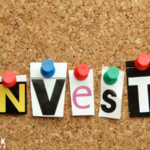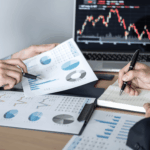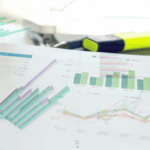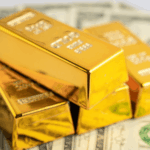Economic uncertainties surge in the United States as various indicators suggest a potential tilt toward stagflation. Recent policy moves and market signals have prompted analysts to reassess growth and inflation prospects. New perspectives and additional analysis are emerging against a backdrop of historical caution. Factors including trade measures and executive actions have partly driven this renewed scrutiny.
Reports from multiple outlets mirror these concerns with details that differ from earlier, more optimistic assessments. Outlets have highlighted a downward revision in growth predictions compared to forecasts from previous months. While some expected a moderate recovery, emerging data now points toward prolonged economic strain and trade disruptions reminiscent of past downturns.
Market observers express concern over the possibility of stagflation—a combination of elevated inflation with sluggish economic performance. Harvard economist Jason Furman, formerly chair of the Council of Economic Advisors, remarked on shifting forecasts.
“Over the last four months, economists have upgraded their forecasts for inflation and downgraded their forecasts for growth. There is no technical definition of ‘stagflation,’ but this definitely moves the economy in that direction.”
Does the U.S. economy face stagflation risks?
Current trends show increasing inflation and reduced growth, components commonly associated with stagflation. Analysts point to persistent trade tensions and policy uncertainties as factors accelerating such a scenario.
Will tariffs elevate recession risks?
Tariff measures introduced by President Trump continue to strain trade relations and heighten recession fears. Escalating retaliatory duties from key trading partners have raised apprehensions over a significant reduction in economic output. Chief economist Diane Swonk from KPMG has noted a shift toward a downturn.
“Historical tariff hikes resulted in substantial declines in global trade, and the current measures evoke similar concerns.”
Policy makers find themselves balancing the need for monetary restraint against mounting growth challenges. Federal Reserve Chair Jerome Powell signaled potential risks associated with current tariffs.
“Higher inflation and slower growth are expected as a consequence of tariff policies.”
Major financial institutions, including Goldman Sachs (NYSE:GS) and JPMorgan Chase, have increased their probability estimates for a recession in the coming year.
A thorough review of the situation indicates a complex interplay between trade policy and economic performance. Comparisons with earlier periods reveal differences in policy flexibility and global market dynamics from the early twentieth century tariff actions. Observing these shifts provides insights that may prove useful for evaluating future fiscal strategies and market responses.










